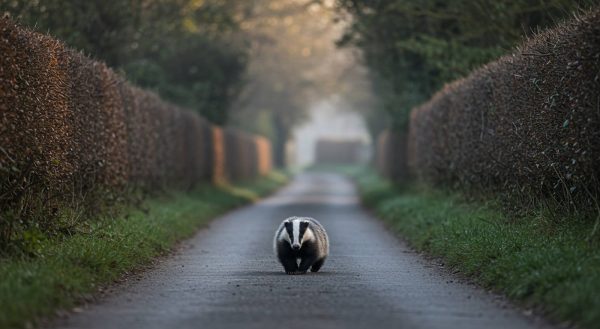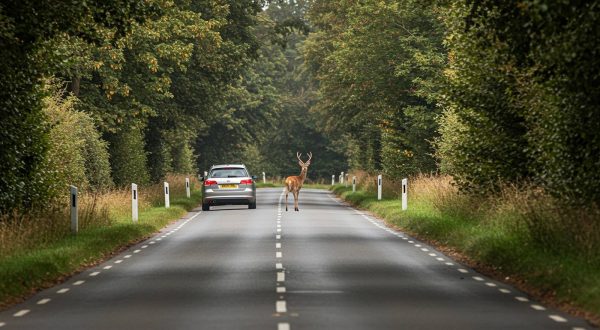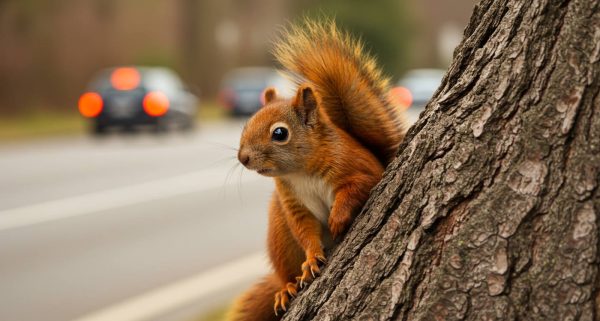The UK has robust wildlife protection laws that safeguard animals on and around our roads. Under the Wildlife and Countryside Act 1981, it is illegal to intentionally kill, injure, or take any wild bird or animal. This legislation forms the backbone of wildlife protection UK regulations, ensuring our native species are preserved for future generations.
London Wildlife Protection: Urban Challenges
London’s green corridors present unique wildlife challenges. Despite being a bustling metropolis, London hosts diverse wildlife, from urban foxes to protected bat species. Transport for London (TfL) data shows that wildlife collisions are particularly common in outer London boroughs where urban areas meet green spaces.
Wildlife Protection UK: Regional Variations
Different regions across the UK face varying wildlife protection challenges. While Scottish highlands deal with deer migration routes, London suburbs manage fox populations, and rural England navigates badger territories. Understanding these regional differences helps drivers adapt their behaviour accordingly.

Legal Responsibilities Under Wildlife Protection Laws
As a driver in the UK, you have specific legal obligations regarding wildlife. The Road Traffic Act 1988 requires you to report collisions with certain animals, including dogs, horses, cattle, pigs, goats, sheep, donkeys, and mules. While not legally required, reporting collisions with wildlife aids conservation efforts and helps authorities monitor wildlife movement patterns.
Common UK Road Wildlife Encounters
In urban areas, foxes and small mammals are frequent road users. Rural areas also see larger wildlife such as deer and large birds such as pheasants. The Deer Initiative estimates around 74,000 deer-vehicle collisions annually in the UK. These incidents cost the British economy several million pounds each year in damage and delays.
Preventative Driving Techniques
The key to protecting wildlife lies in anticipation and careful driving. Reducing speed in known wildlife areas gives you more time to react if an animal appears. When safe to do so, using high beams can help spot animals earlier, particularly during dawn and dusk when they’re most active. Wildlife warning signs deserve special attention, as they indicate areas where animals frequently cross.

Urban Wildlife Protection Strategies
In London and other urban areas, wildlife protection faces unique challenges. Urban animals often follow railway lines and waterways, crossing roads at predictable points. Local council wildlife protection signs indicate these crossing points, particularly in suburban areas, and should be treated with the same respect as other warning signs.
What to Do After a Wildlife Encounter
If you encounter wildlife on the road, try to slow down safely without swerving, as sudden movements can lead to more serious accidents. For significant collisions, contact the police immediately. If you find injured wildlife and it’s safe to do so, local wildlife protection services can provide expert assistance. Making note of the location helps alert other drivers and contributes to wildlife protection efforts.
Supporting Wildlife Conservation Efforts
Across the UK, regions are implementing various wildlife protection measures. Green bridges provide safe crossing points for larger animals, while underground tunnels help smaller wildlife navigate busy roads safely. Warning systems in high-risk areas alert drivers to potential wildlife activity, and roadside fencing guides animals to safe crossing points.

Contributing to Wildlife Protection
Everyone can play a part in wildlife protection. By reporting wildlife sightings to local conservation groups and following wildlife protection laws, drivers contribute to a growing understanding of animal movement patterns. Supporting wildlife protection organisations helps fund research and implementation of new safety measures. Sharing information about wildlife crossing points with other drivers creates a community of informed road users working together to protect our wildlife.
This collaborative approach to wildlife protection benefits everyone—reducing accidents, protecting our natural heritage, and making our roads safer for all users.
